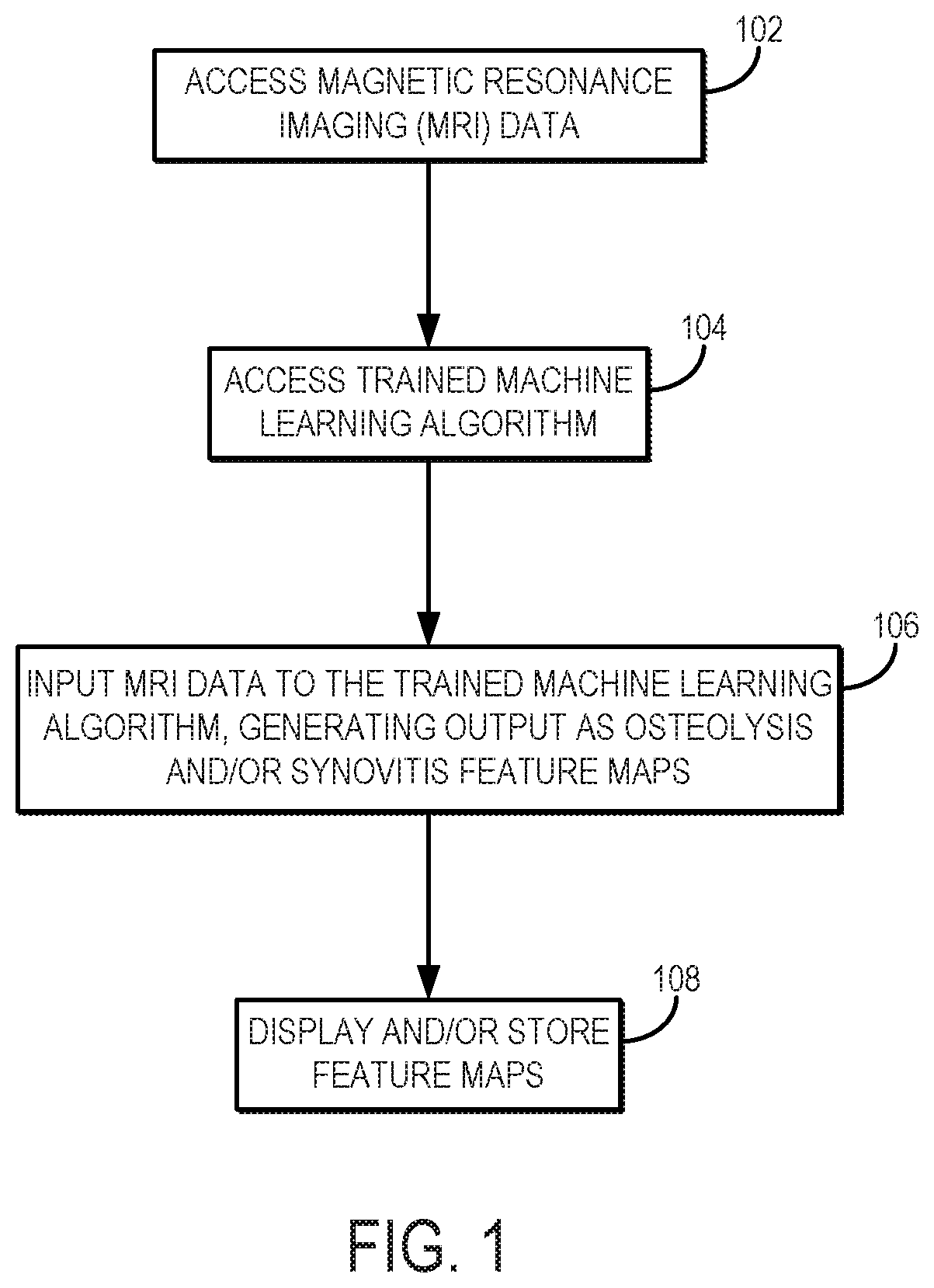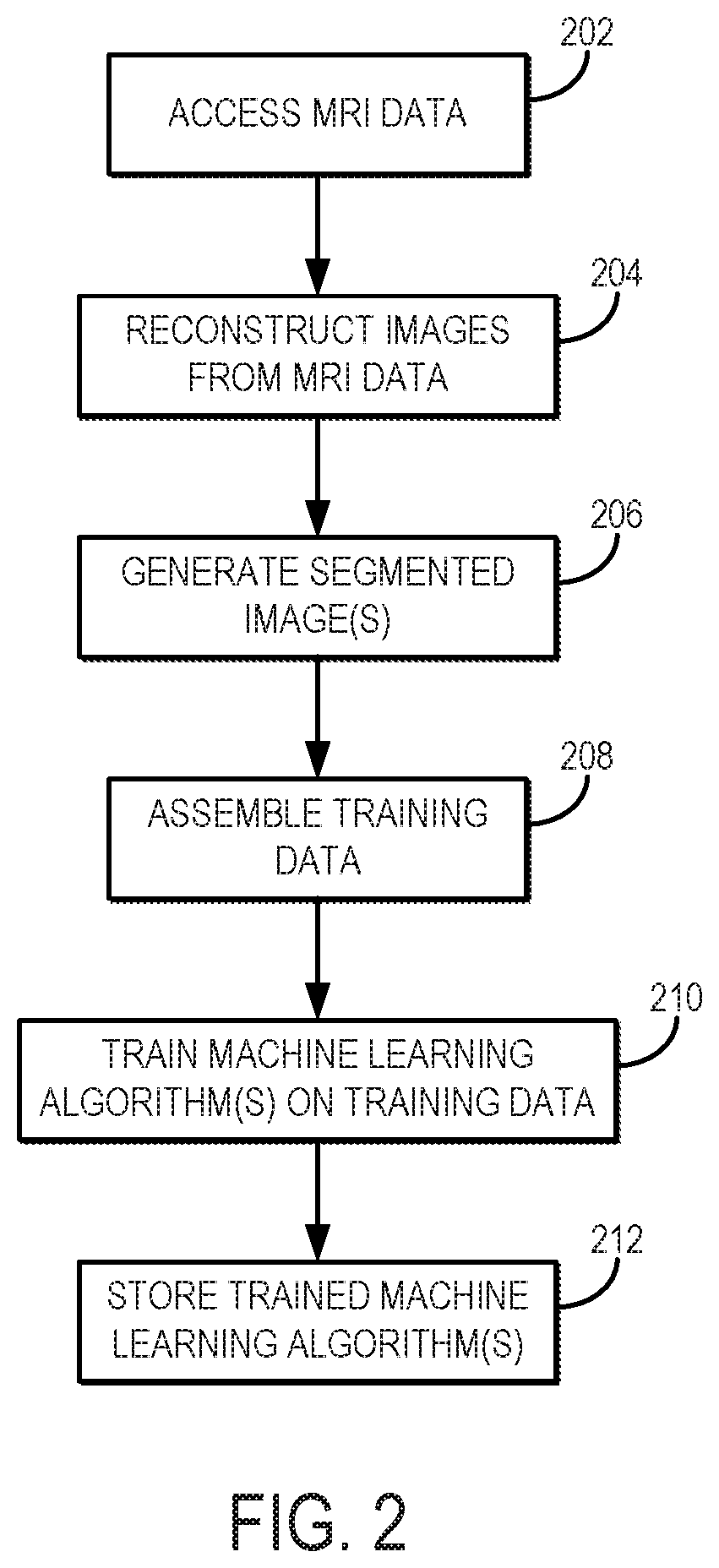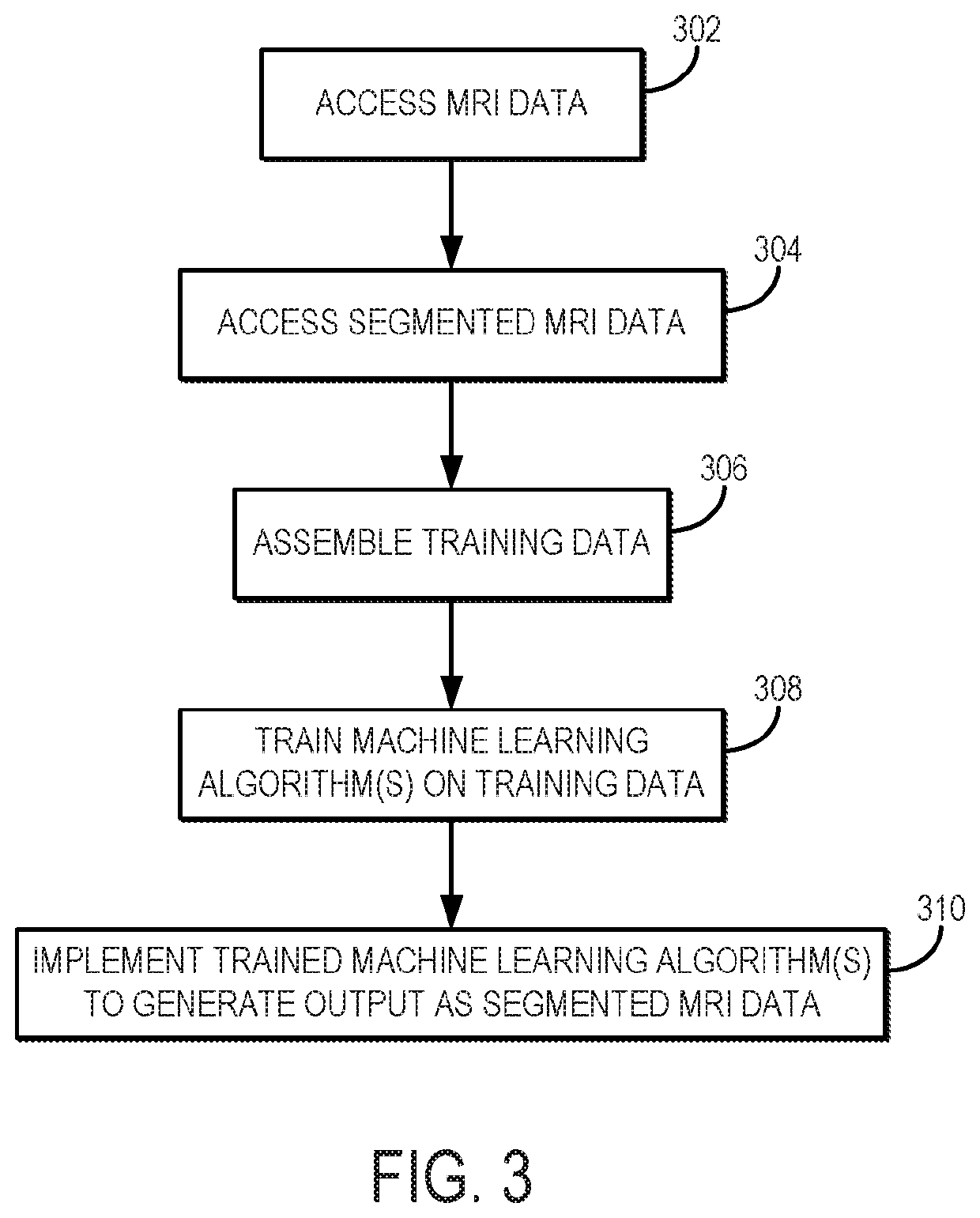Neural Network Classification of Osteolysis and Synovitis Near Metal Implants
a neural network and osteolysis technology, applied in the field of neural network classification of osteolysis and synovitis near metal implants, can solve the problems of failures requiring revision, complex mri interpretation in the immediate vicinity, and poor characterization of clinically relevant mri signatures
- Summary
- Abstract
- Description
- Claims
- Application Information
AI Technical Summary
Benefits of technology
Problems solved by technology
Method used
Image
Examples
Embodiment Construction
[0017]Described here are systems and methods for utilizing a machine learning algorithm implemented with a hardware processor and memory to provide image-based deep learning on 3D-MSI MRI to provide supplementary guidance for radiological identification of common soft-tissue pathologies near HA or other metallic implants or objects. In particular, preliminary data demonstrates the promising capabilities of convolutional neural networks (“CNNs”) trained on a cohort of normal and pathological 3D-MSI of HA (or patients with or other metallic implants or objects) to spatially identify periprosthetic bone loss (i.e., osteolysis) and adverse synovial responses. Using this artificial intelligence (“AI”) analysis engine, feature maps advising potential soft tissue and bone pathology can be constructed on a subject-specific basis and presented to radiologists and surgeons as a direct visual presentation of regional tissue abnormalities near HA or other metallic implants or objects. This comp...
PUM
 Login to View More
Login to View More Abstract
Description
Claims
Application Information
 Login to View More
Login to View More - R&D Engineer
- R&D Manager
- IP Professional
- Industry Leading Data Capabilities
- Powerful AI technology
- Patent DNA Extraction
Browse by: Latest US Patents, China's latest patents, Technical Efficacy Thesaurus, Application Domain, Technology Topic, Popular Technical Reports.
© 2024 PatSnap. All rights reserved.Legal|Privacy policy|Modern Slavery Act Transparency Statement|Sitemap|About US| Contact US: help@patsnap.com










